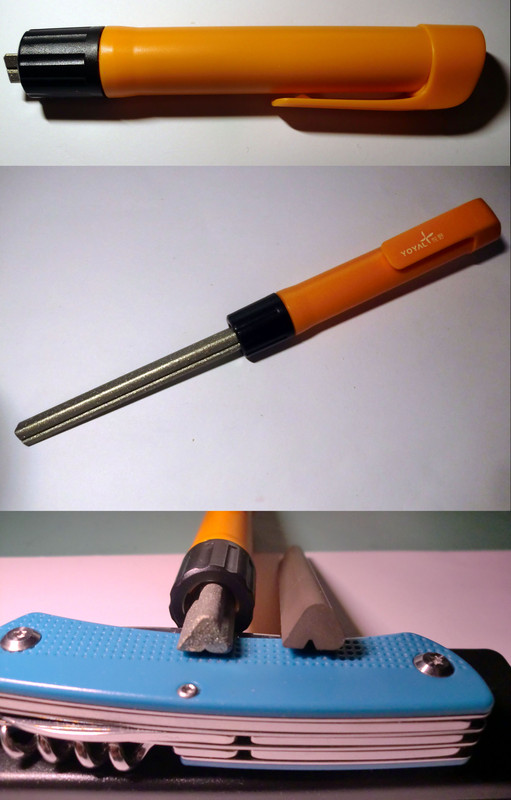Due to prolonged problems with wrist and shoulder I have not been able to do much sharpening during last months. Today I took two diamond sharpeners out of the drawer.
Both are new. One is Chinese - Made in China, coarse grit (360 JIS). I contacted the manufacturer, they confirmed grit and standard.
The second one is US - Made in China, fine (600) grit. I don‘t know what grit standard Lansky uses for their diamond plates / hones. Be it ANSI or JIS, it should be finer than coarse 360 grit.
To my surprise they feel the other way round. The coarse one feels much finer than the one that should be a fine diamond plate. As mentioned before both need to be broken in. As both are Made in China (and the Chinese Made in China is manufactured by a big name on the market that does OBM and ODM business) I can‘t imagine that quality will be much different. Especially as both sharpeners look identical in design, shape (only the bodys color is different).
I don‘t have a microscope to make a particle size comparison. I appreciate any advice.
Both are new. One is Chinese - Made in China, coarse grit (360 JIS). I contacted the manufacturer, they confirmed grit and standard.
The second one is US - Made in China, fine (600) grit. I don‘t know what grit standard Lansky uses for their diamond plates / hones. Be it ANSI or JIS, it should be finer than coarse 360 grit.
To my surprise they feel the other way round. The coarse one feels much finer than the one that should be a fine diamond plate. As mentioned before both need to be broken in. As both are Made in China (and the Chinese Made in China is manufactured by a big name on the market that does OBM and ODM business) I can‘t imagine that quality will be much different. Especially as both sharpeners look identical in design, shape (only the bodys color is different).
I don‘t have a microscope to make a particle size comparison. I appreciate any advice.


